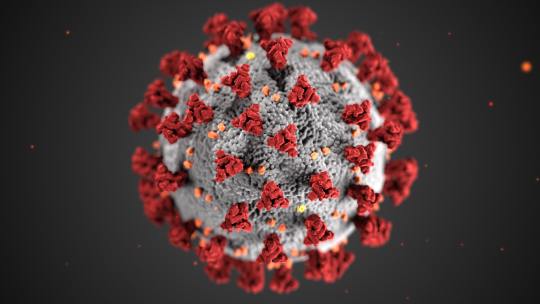#coronavirus news
Text
The Weather
Twenty-seven US states remain at High to Very High levels of SARS-CoV-2 detected in wastewater since February 28, 2024, with five states not reporting.

Wastewater levels are decreasing throughout the country except in the Midwest. The South is still experiencing extremely high transmission. As a reminder, the last two weeks, shown in gray, are provisional data. These values may change as additional wastewater sites report data.

Despite these ongoing high levels of transmission in most of the country, and in defiance of pleas from civil society to protect the most vulnerable among us, the CDC has once again decided to walk back already insufficient protections – this time in the form of isolation guidance. It announced on Friday at 1 pm that it will repeal the 5-day isolation period for COVID-19 and instead treat COVID-19 like it does other respiratory viruses like flu and RSV, linking isolation length with symptomatology and fever. This policy, of course, is not based on the best evidence–just vibes and a lack of care for those of us still dying (1000s weekly) and still becoming disabled by Long COVID.
Last week, the CDC recommended that people 65 years and older should receive an updated booster. It did not approve a booster for other people in high-risk categories because they didn’t bother studying the benefits and risks in these groups.
Wins
OK. So it’s been a rough week. But you know what? We are all fighting back. We see you all making calls, creating and signing petitions, joining and expanding Mask Blocs, creating and distributing zines, and making your own air-cleaning systems. We see so many more masked, tested, and ventilated events than we used to! We are mobilizing collective power to keep each other safe and to transform this state.
Next week, March 11, will mark the 5th anniversary of the declaration of the pandemic. We’re not where we should be, but this pandemic has radicalized a lot of us. Keep connecting. Keep finding your people. Keep going. We will win.
Oh! And check out these Free COVID-19 and flu test vending machines in King County, Washington!
Variants
JN.1 is still the most dominant variant circulating in the United States and is projected to account for 92.3% of all circulating variants by March 2nd, 2024. Two JN.1 descendants, JN.1.13 and JN.1.18, are now the second and third most common circulating variants, projected to be at 3.3% and 1.8%, respectively.
To check for circulating variants within your community, you can find your HHS Region through the CDC Variant Tracker dashboard.
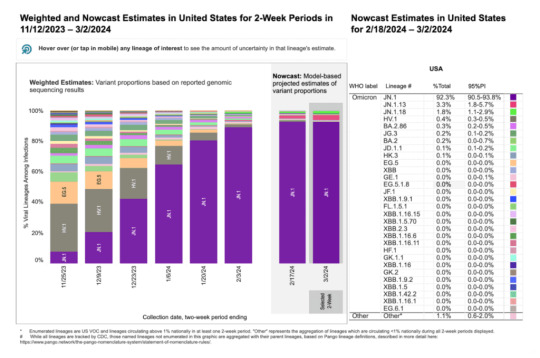
Long Covid
In an article published in Science, Drs Ziyad Al-Aly and Eric Topol reviewed the perplexing case of Long COVID. They discuss the lack of consensus and systematization when it comes to the classification of the disease, partly due to its different mechanisms and manifestations. For example, younger adult and female Long COVID patients are more likely to be afflicted by fatigue, dysautonomia, brain fog, and post-exertional malaise, while older patients are more likely to deal with cardiovascular and metabolic complications. They also discuss the current potential treatments for Long COVID, but express that since nonpharmaceutical interventions have been neglected, vaccines are the only available therapy. However, vaccines are unable to prevent Long COVID. Ultimately, they state that the only way to prevent Long COVID is by ending COVID transmission, such as by administering pan-variant neutralizing intranasal vaccines.
On March 15, 2024, the Long COVID March will be taking place in Washington D.C. at the Lincoln Memorial. The march is intended to mobilize Long COVID patients and allies to demand acknowledgment and policy changes from the government. You can read the march’s mission statement, which includes a list of objectives.
Take Action
Join us in demanding the CDC reinstate the 5-day COVID isolation policy. Despite the guidelines having already been dropped, we must still fight for adequate protections from COVID to safeguard our communities from harm. Make your voices known by sending a letter to the White House and your elected officials through our Action Network. The People’s CDC will also be implementing other action items in the coming weeks, so look out for those!
Today is COVID Memorial Day, in which we remember the 1.2 million lives lost to COVID in the United States, and show solidarity with the millions living with COVID grief and Long COVID. Check out Marked by COVID to learn more or to participate in today’s virtual vigil.
Again, we must continue to contact our elected officials to demand a ceasefire in Gaza, and we must continue to wear and require the wearing of high-quality respirators such as N95s and KN95s at protests and within organizing spaces.
#op#covid#covid19#covid-19#covid 19#long covid#long covid march#covid memorial day#coronavirus#sars-cov-19#covid isn't over#pcdc#people's cdc#cdc#centers for disease control#covid isolation#covid pandemic#coronavirus pandemic#pandemic#covid news#pandemic news#mask up#coronavirus news#ceasefire now#palestine#covid is not over#public health#uspol#img#described in alt text
18 notes
·
View notes
Text
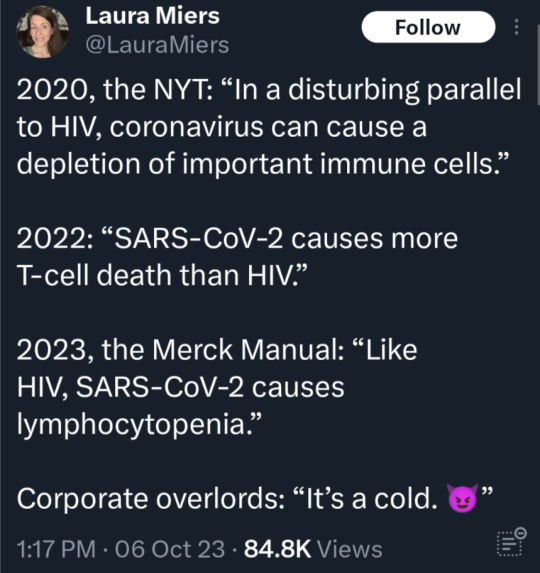


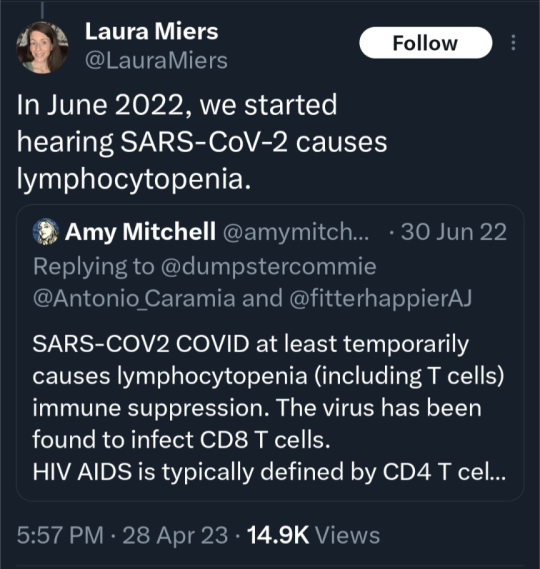
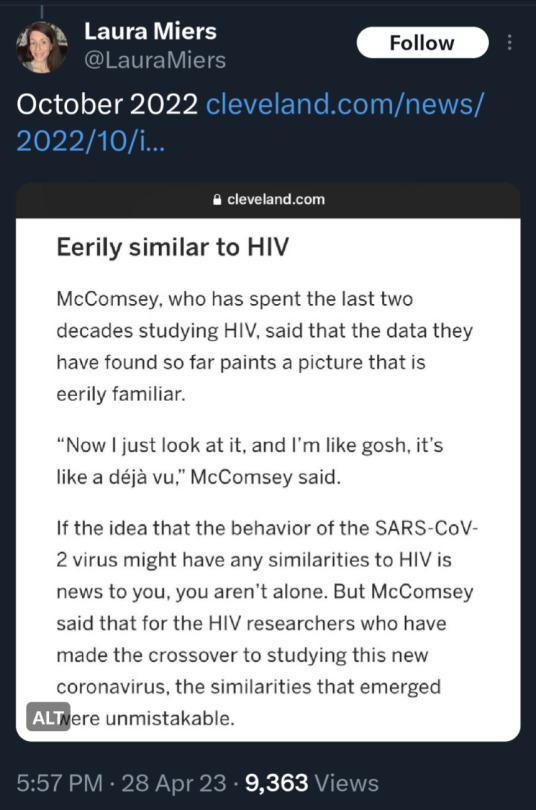
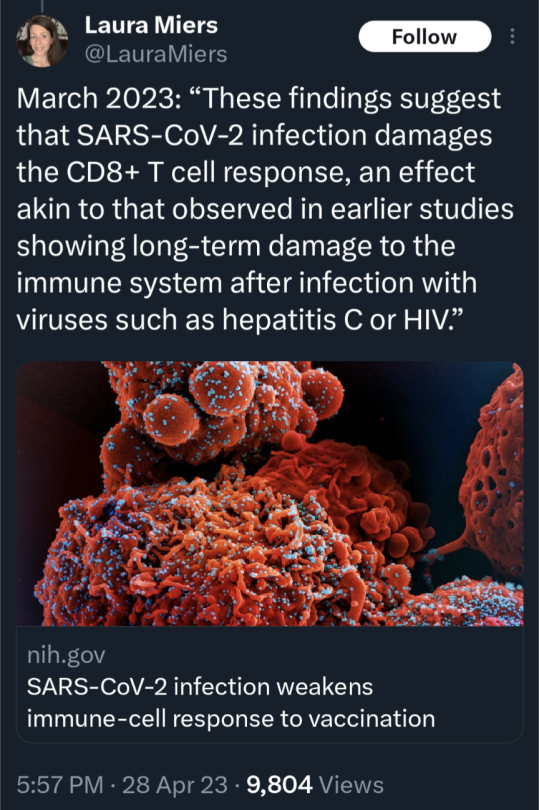

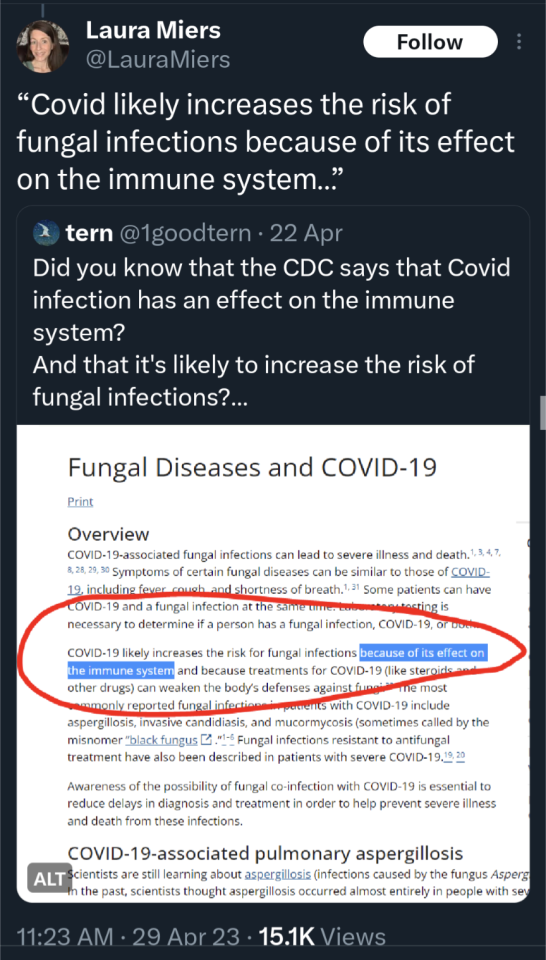


(source)
#covid 19#coronavirus#news#science#please get vaccinated#please get the booster#please stay safe#covid is not over#covid is not a hoax#please look out for each other#covid--19#long covid#yes the covid vaccine is safe
49K notes
·
View notes
Text
covid test

Crucial Steps: A Guide to Understanding the COVID Test Process
In the ongoing battle against the global COVID-19 pandemic, testing remains a pivotal tool in identifying and mitigating the spread of the virus. Understanding the COVID test process is crucial for individuals seeking clarity on their health status and for society at large in controlling the transmission of the virus.
The COVID test, short for coronavirus test, is a diagnostic examination designed to detect the presence of the SARS-CoV-2 virus, responsible for causing COVID-19. This testing process typically involves the collection of respiratory samples, such as nasopharyngeal swabs, throat swabs, or saliva samples. The collected specimens are then analyzed in specialized laboratories to determine whether the virus is present.
One of the most common types of COVID tests is the PCR (polymerase chain reaction) test. This method amplifies genetic material from the virus, allowing for its detection with high sensitivity. PCR tests are known for their accuracy and reliability, making them a preferred choice in diagnosing active COVID-19 infections. The process involves inserting a swab into the back of the throat or the nose to collect a sample for analysis.
Another widely used testing method is the rapid antigen test. This test detects specific proteins on the surface of the virus and provides results in a relatively short timeframe. While rapid antigen tests offer quicker results, they may be less sensitive than PCR tests, particularly in individuals with low viral loads.
Understanding the COVID test process extends beyond sample collection. Timely and accurate result reporting is essential for effective public health measures. Individuals undergoing testing should be aware of the typical turnaround time for results, which can vary depending on the type of test and the testing facility. It is crucial to follow testing guidelines and any recommended quarantine measures while awaiting results.
Testing plays a crucial role not only in diagnosing active infections but also in identifying individuals who may be carrying the virus without exhibiting symptoms. Asymptomatic carriers can unknowingly contribute to the spread of COVID-19, making widespread testing a key strategy in controlling outbreaks.
In addition to diagnostic testing, there are also serological tests that detect antibodies produced in response to a previous infection. These tests can provide insights into past exposure to the virus but are not suitable for diagnosing active infections. Serological tests can be valuable in understanding the prevalence of the virus within a community and assessing the potential for herd immunity.
In conclusion, comprehending the COVID test process is vital for individuals, communities, and public health systems. Regular and widespread testing contributes to the timely identification of cases, effective contact tracing, and the implementation of appropriate public health measures. By staying informed about the different types of tests available, their purposes, and the importance of result reporting, individuals can actively participate in the collective effort to curb the spread of COVID-19 and protect the well-being of society as a whole.
Navigating Health Safely: Everything You Need to Know About COVID Tests
In the ongoing battle against the global COVID-19 pandemic, COVID tests have become an integral tool in understanding and managing the spread of the virus. As individuals and communities strive to navigate health safely, it is essential to be well-informed about the various aspects of COVID testing.
A COVID test, or coronavirus test, is a diagnostic procedure aimed at identifying the presence of the SARS-CoV-2 virus, responsible for causing COVID-19. The significance of these tests lies in their ability to detect infections, whether symptomatic or asymptomatic, and to facilitate timely public health interventions.
There are several types of COVID tests, each serving specific purposes. The Polymerase Chain Reaction (PCR) test is a widely used method that detects the genetic material of the virus. Known for its high accuracy, the PCR test is effective in diagnosing active infections and is often employed in healthcare settings and testing laboratories. Nasopharyngeal swabs or throat swabs are commonly used to collect samples for PCR testing.
Rapid antigen tests are another category of COVID tests designed to provide quick results. These tests detect specific viral proteins and are valuable for immediate screening, especially in high-traffic settings. While rapid antigen tests offer prompt results, they may have lower sensitivity compared to PCR tests, particularly in individuals with lower viral loads.
Understanding the COVID test process is crucial for individuals seeking testing. Sample collection methods vary, and individuals may undergo nasal swabs, throat swabs, or even provide saliva samples, depending on the type of test and testing facility. It is important to follow testing guidelines and any recommended quarantine measures while awaiting results.
Testing is not limited to diagnosing active infections. Serological tests, also known as antibody tests, are conducted to detect antibodies produced in response to a past infection. These tests contribute to understanding the prevalence of the virus within a community and assessing potential immunity.
Timely result reporting is a key component of the testing process. Individuals should be aware of the typical turnaround time for results, which can vary based on the type of test and testing facility. Adhering to recommended quarantine measures during the waiting period is essential for preventing further transmission.
Regular and widespread testing is a cornerstone of public health strategies to control the spread of COVID-19. Testing facilitates early identification of cases, effective contact tracing, and the implementation of targeted interventions. By staying informed about the different types of tests available, their purposes, and the importance of result reporting, individuals can actively contribute to the collective effort to navigate health safely and curb the spread of COVID-19 in their communities.
What test should I get to see if I have COVID 19
Navigating Uncertainty: What Test Should I Get to Determine COVID-19 Status?
In the current landscape of the ongoing COVID-19 pandemic, individuals find themselves facing uncertainties regarding the most suitable test to determine their COVID-19 status. The question echoes in the minds of many: What test should I get to see if I have COVID-19? Navigating through the array of testing options requires a comprehensive understanding of the available tests and their distinct characteristics.
One of the primary tests employed to diagnose active COVID-19 infections is the Polymerase Chain Reaction (PCR) test. This molecular diagnostic test detects the genetic material of the SARS-CoV-2 virus and is renowned for its high accuracy. If you are seeking confirmation of a current infection, the PCR test is a reliable choice. It typically involves the collection of nasopharyngeal or throat swab samples, and the results are obtained through laboratory analysis.
For those who prioritize swift results, the rapid antigen test offers a quicker turnaround time compared to the PCR test. Rapid antigen tests detect specific proteins on the surface of the virus and are suitable for immediate screening. However, it is essential to note that these tests may have lower sensitivity, particularly in individuals with lower viral loads. If time is of the essence and you need quick results, the rapid antigen test may be a suitable option.
Navigating uncertainty also involves considering serological tests, commonly known as antibody tests. These tests do not diagnose active infections but rather detect the presence of antibodies produced in response to a past infection. If you are curious about whether you have been previously exposed to the virus and developed an immune response, an antibody test may provide valuable insights.
Choosing the right test depends on various factors, including the presence of symptoms, the urgency of results, and the purpose of testing. If you are experiencing symptoms associated with COVID-19, such as fever, cough, or shortness of breath, a PCR test is recommended for accurate diagnosis. On the other hand, if you require rapid results for immediate decision-making, a rapid antigen test may be more suitable.
It is crucial to adhere to testing guidelines and follow any recommendations from healthcare professionals or testing facilities. Timely result reporting is vital not only for personal decision-making but also for contributing to public health efforts in controlling the spread of the virus. Individuals should be aware of the typical turnaround time for results based on the chosen test.
In conclusion, navigating uncertainty about COVID-19 status involves making informed decisions about the type of test to undergo. Whether opting for the precision of a PCR test, the speed of a rapid antigen test, or the insights from an antibody test, individuals play a crucial role in the collective effort to curb the spread of the virus. By understanding the nuances of each test and considering individual circumstances, individuals can make informed choices to safeguard their health and contribute to the broader public health goals.
Choosing Wisely: A Guide to Selecting the Right Test for COVID-19 Detection
In the ongoing battle against the global COVID-19 pandemic, the importance of selecting the right test for accurate detection cannot be overstated. Individuals are often confronted with the question: What test should I get to see if I have COVID-19? Navigating through the myriad of testing options requires careful consideration and an understanding of the distinct features of each test.
One of the primary tests recommended for COVID-19 detection is the Polymerase Chain Reaction (PCR) test. Renowned for its high accuracy, the PCR test detects the genetic material of the SARS-CoV-2 virus, providing a reliable diagnosis of active infections. Typically, nasopharyngeal or throat swab samples are collected, and the results are obtained through thorough laboratory analysis. If precision in diagnosis is a priority, the PCR test is a prudent choice.
For those seeking rapid results, the rapid antigen test emerges as an alternative. This test detects specific viral proteins and offers quicker turnaround times compared to the PCR test. However, it is essential to note that the rapid antigen test may have lower sensitivity, particularly in individuals with lower viral loads. If immediate results are crucial for decision-making, the rapid antigen test may be a suitable option.
Adding another dimension to the testing landscape are serological tests, commonly known as antibody tests. Unlike diagnostic tests, antibody tests do not identify active infections but instead detect the presence of antibodies developed in response to a past infection. If the goal is to understand past exposure and potential immunity, an antibody test may provide valuable insights.
Choosing the right test depends on various factors, including symptoms, the urgency of results, and the purpose of testing. If an individual is symptomatic with signs of COVID-19, such as fever, cough, or shortness of breath, opting for a PCR test is advisable to ensure accurate diagnosis. Conversely, if rapid results are needed for immediate decision-making, the rapid antigen test may be more suitable.
Adhering to testing guidelines and following recommendations from healthcare professionals or testing facilities is crucial. Additionally, being aware of the typical turnaround time for results based on the chosen test is essential for planning and taking appropriate actions while awaiting results.
In conclusion, the process of choosing the right test for COVID-19 detection involves a thoughtful evaluation of individual circumstances and testing priorities. Whether prioritizing accuracy with a PCR test, speed with a rapid antigen test, or insights into past exposure with an antibody test, individuals play a crucial role in the collective effort to curb the spread of the virus. By making informed decisions about testing options, individuals contribute not only to their personal well-being but also to the broader public health goals aimed at controlling and mitigating the impact of the COVID-19 pandemic.
Hello american
hello american - Your Magazine: Famous News, Lifestyle, Health, Technology, Career & fun etc
News:
"Welcome to Hello American's News Hub, where stories unfold and perspectives converge. Stay informed with our diverse coverage of national and global events, providing in-depth analyses, breaking news, and thought-provoking insights that shape our world."
Health:
"Hello American Health: Your Wellness Compass. Discover a wealth of health resources, expert advice, and articles dedicated to promoting holistic well-being. From fitness trends to mental health guides, we're committed to empowering you on your journey to a healthier life."
Lifestyle:
"Experience the Vibrant hello american Lifestyle. Delve into our curated collection celebrating the rich tapestry of American living. Explore travel destinations, culinary delights, fashion trends, and more, embracing the diverse threads that weave the fabric of our culture."
Technology:
"Hello American Tech: Navigating Tomorrow's Innovations. Explore the forefront of technology with us. From gadget reviews to AI breakthroughs, our tech section unveils the latest trends, helping you stay connected and empowered in an ever-evolving digital landscape."
Career:
"Hello American Careers: Empowering Your Professional Odyssey. Embark on a journey of growth and opportunities. Access career insights, job openings, mentorship programs, and skill development resources, designed to fuel your aspirations and drive your career forward."
Education:
"Education Redefined at Hello American. Embrace learning as an ongoing adventure. Dive into our educational hub, where traditional knowledge meets innovative approaches. Explore diverse learning paths, online courses, and resources designed to inspire lifelong curiosity and growth."
Each section offers a tailored experience, catering to the diverse interests and needs of the Hello American audience, while aiming to provide valuable information and resources in these respective domains.
0 notes
Text
The Coronavirus and Blockchain Technology
Coronavirus infection The years 2019 and 2020 have left people and the entire system in disarray. This virus had an impact on the government, the financial, education, and health sectors. Currently, things are difficult, but most importantly, things need to change. The lockdown procedure has somewhat brought everything under control. The previous Coronavirus Symptoms are vary, according to the news about the virus. Scientists claim that because the symptoms are so subtle, it might be difficult to determine whether a person has the condition. Prior symptoms included a high temperature, cough, cold, sore throat, and difficulty breathing. However, it is now taking three to four days to investigate symptoms. According to reports, several persons experienced breathing difficulties without even being aware of the cause.
According to research, the Covid-19 virus can spread more readily in diabetics; however lowering sugar intake, avoiding fatty foods, and consuming hot food can destroy the protein structure of the virus. The body will be getting ready to create more antibodies to protect itself by eating more fresh fruits and foods high in vitamin C.
The Blockchain Technology In Health Sectors
In addition, the cutting-edge blockchain technology has been quite helpful in overcoming this difficult scenario. This technique has been widely embraced by numerous industries. VeriDoc Global has taken the cutting-edge Coronavirus blockchain solution to the healthcare industry to lend a helping hand. Only in the health industry is it feasible to treat a coronavirus. There are many people who have their health records, and there are many updates. Data loss can be a significant issue right now. All of the data that individuals may access and share under security will have a safe storage platform thanks to the blockchain solution. The blockchain architecture allows for transparency, where every every modification is visible. The information and data in this system cannot be altered by outside parties.
However, this site's payment system is also secure. This approach is quicker, more secure, and cost-effective because it doesn't rely on or involve any other third parties to handle payments. The system in the health sector is about to undergo a revolution thanks to VeriDoc Global. The data can be accessed and shared confidentially and securely by authorised entities using this system, including the United Nations, the World Health Organization, governments, and other statutory health organisations.
To know more about how blockchain in healthcare makes the entire ecosystem more productive and transparent, visit Coronavirus solutions and learn how blockchain technology impacts the healthcare sector.
0 notes
Text

Source

#public health#current events#news#news media#cdc#Covid#coronavirus#pandemic#bleak#joe biden#politics#us politics
28K notes
·
View notes
Text
India increases surveillance as more coronavirus news breaks in China
India increases surveillance as more coronavirus news breaks in China #CoronavirusNews #Covid19 #China #India #HealthWarning #HealthNews #Advisory #Covid19News
Coronavirus News: Covid is Not Over Yet – warns the Indian Health Minister. His statement came in response to the increasing number of Covid-19 cases in China, Union Health Minister Mansukh Mandaviya stated that he had reviewed the country’s coronavirus situation with experts and officials, added that Covid-19 was still present, and instructed all relevant officials to remain vigilant and to step…

View On WordPress
0 notes
Text
Is Returning to the Office Really Necessary in 2022?
Is Returning to the Office Really Necessary in 2022?
We will discuss the real reason some company owners and leadership are forcing people to return to the office when they can do their jobs from anywhere remotely. Here’s the first article that shed some light on this “return to the office” requirement phenomenon
Article #1 | Article #2
What is really driving the “return to the office” requirement? We will discuss the possible reasons.
Looking for…

View On WordPress
#accountability#addressing employee issues#apply for work at home jobs#bad job#career advice 2022#career advise#career change#career change after 35#career change after 40#career change after 45#career choice#career choices#career goals#coronavirus news#coronavirus update#corporate careers#cv tips#looking for a job while having another job#looking for a job while having one#overemployed#overemployment#overemployment remote#overemployment risks#provide online services#return to the office mandates#work at home
0 notes
Text
आखिर कैसे फैला कोरोना?, किम जोंग उन ने दिया जवाब, दावे सुन आप भी रह जाएंगे हैरान
आखिर कैसे फैला कोरोना?, किम जोंग उन ने दिया जवाब, दावे सुन आप भी रह जाएंगे हैरान
Image Source : FILE PHOTO
Kim Jong Un on Coronavirus
Highlights
‘एलियन की वजह से कोरोना वायरस फैल रहा है’
‘एलियंस ने गुब्बारे में वायरस भरकर फेंका था’
बॉर्डर के आस-पास रहने वाले लोगों के लिए निर्देश
Kim Jong Un on Coronavirus: कोरोना वायरस ने पूरी दुनिया में तबाही मचाई। अभी भी कोरोना वायरस के लाखों मामले सामने आ रहे हैं, लेकिन हैरानी की बात यह है कि अब तक पूरी दुनिया के सामने यह रहस्य है कि यह…

View On WordPress
#Around The World Hindi News#Corona cases#Coronavirus#Coronavirus News#covid-19#Kim Jong Un on Coronavirus#Kim Jong-un#North Korean#spreading corona from aliens#world news
0 notes
Text
Coronavirus India news live updates: Health Ministry closely monitoring Covid situation in Maharashtra, Kerala, Delhi and Karnataka
Coronavirus India news live updates: Health Ministry closely monitoring Covid situation in Maharashtra, Kerala, Delhi and Karnataka
Coronavirus news live: Union Health Ministry is closely monitoring the COVID19 situation in Maharashtra, Kerala, Delhi, and Karnataka and has asked them to follow the five-fold strategy, i.e, Test-Track-Treat-Vaccination and adherence to COVID Appropriate Behavior, Official sources said. This comes after India recorded single-day rise of over 7000 cases after 99 days.
Show more Show less
!1 New…
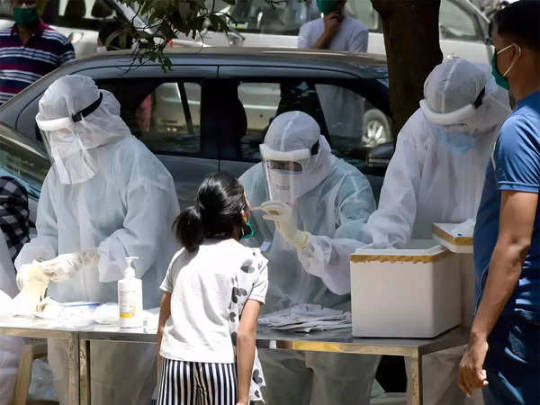
View On WordPress
#Closely#Coronavirus#Coronavirus India#Coronavirus India live#Coronavirus India live news#Coronavirus India news#Coronavirus India situation#Coronavirus news#Covid#Delhi#Health#health ministry#India#India covid situation#Karnataka#Kerala#LIVE#Maharashtra#maharashtra covid news#Ministry#Monitoring#News#situation#updates
0 notes
Text
Last week, two of the top scientific advisors to Anthony Fauci testified before the House Select Subcommittee on the Coronavirus Pandemic, which is investigating the origins of Covid-19.
Bob Garry told members of Congress that the novel coronavirus had emerged in nature and not from a lab.
His colleague, Kristian Andersen, denounced Republicans for spreading a “conspiracy theory” that he and Garry had worked with Fauci in early 2020 to produce disinformation about Covid’s origin in the form of a March 17, 2020 Nature Medicine paper, “The Proximal Origin of SARS-CoV-2.”
That paper dismissed the lab leak theory and has been viewed nearly six million times since its publication.
Andersen, a professor at Scripps Research, acknowledged that some earlier, heavily-publicized emails between him, his colleagues and Fauci had shown that they had previously considered the lab leak hypothesis as a serious possibility.
But, Andersen told Congress, after he and his co-authors had carefully considered the evidence, they concluded that “culturing” in different cells or animal species in a lab, which can make a virus more infectious and well-adapted for humans and other animal species, had not occurred, and that the virus had spilled over from wildlife to humans.
“By the time we published our final version of Proximal Origin,” Andersen explained in his written testimony, “I no longer believed that a ‘culturing’ scenario was plausible.”
Andersen emphasized to Congress that this wasn’t because Fauci, National Institute of Health Director Francis Collins, or anyone in the White House or Intelligence Community had asked him to. The reason was simply that he and his colleagues were practicing science.
“As is almost always the case in science,” explained Andersen, “this change in belief was not based on a single piece of evidence, but a combination of many factors, including additional data, analyses, learning more about coronaviruses, and discussions with colleagues and collaborators.”
But now, Public and Racket have obtained hundreds of previously unreleased email and Slack direct messages which cover the period when Andersen and his colleagues collaborated to write “Proximal Origin.”
Those communications paint a starkly different picture from the one Andersen and Garry presented to Congress last week. They show that Andersen and his colleagues clearly thought it was indeed possible not only that the virus that causes Covid-19 had leaked from the Wuhan Institute of Virology, but specifically that it had been cultured in the laboratory.
Crucially, these new documents make clear that pressure from “higher ups” — not “additional data, analyses, learning more about coronaviruses, and discussions with colleagues and collaborators” — led Andersen, Garry, and two of their coauthors to abandon the lab leak theory as implausible.
What’s more, the messages reveal that Andersen still suspected that a lab leak was possible in mid-April, a month after Nature Medicine officially published “Proximal Origin,” and two months after the authors published a preprint.

“I’m still not fully convinced that no culture was involved,” Andersen wrote to his co-authors on April 16. “We also can't fully rule out engineering (for basic research).”
If the paper’s authors weren’t fully convinced that no culturing was possible, why did they rule out “any type of laboratory-based scenario” in their paper?
On April 16, NIH Director Francis Collins emailed Fauci. “I hoped the Nature Medicine article [‘Proximal Origin’] on the genomic sequence of SARS-CoV-2 would settle this… Wondering if there is something NIH can do to help put down this very destructive conspiracy.” By “very destructive conspiracy,” Collins was referring to an accidental lab leak, not a bioweapon or deliberate release.
The next day, April 17, Fauci described the “Proximal Origin” paper at a White House press briefing and said it came from a “group of highly qualified evolutionary virologists,” adding that he did not have their names and without disclosing that he had suggested writing the paper.
Now, the newly released messages show another case of the scientists manipulating a reporter, New York Times science journalist, Donald McNeil. Rather than honestly and openly answering his questions, they misdirected him through deceptive language.


Late last month, Congress released emails showing another senior advisor to Fauci talking about using his private Gmail account in order to avoid investigators in the future using the Freedom of Information Act (FOIA) or Congressional subpoena to obtain his emails.
The newly released messages show Andersen attempting to similarly evade public scrutiny. “We should all just stay on Slack, that’s what we should do — and not use email,” wrote Andersen.
If the consensus opinion of the scientists across dozens of their initial emails and messages had to be summarized in a single phrase, it would be the name of the Slack channel: “project-wuhan_engineering.” The name showed just how probable they felt it was that the virus came from a lab.
Then, on February 6, something strange happened. Andersen changed the name of the Slack channel from “project-wuhan_engineering” to “project-wuhan_pangolin.” For three years, some proponents of the natural spillover theory have claimed that pangolins could be an intermediate link in the transmission of SARS-CoV-2.

Wrote Andersen on February 1, 2020, “I think the main thing still in my mind is that the lab escape version of this is so friggin' likely to have happened because they were already doing this type of work and the molecular data is fully consistent with that scenario.” A few days later, he and the other authors were searching for a plausible intermediate host such as a pangolin that would allow them to refute the theory.

The new Slacks and emails present overwhelming evidence that the paper’s co-authors were not simply following the data, but actively sought to discredit the lab leak, conceal information, deceive journalists, and mislead the public. The question now is why.
From “Project-Wuhan_Engineering” to “Project-Wuhan_Pangolin”
Only a tiny fraction of the communications between Andersen and his coauthors has been reported upon before now. Drawing on the newly released messages, Public has cataloged nearly 60 clear statements by Andersen and his colleagues expressing their belief that a lab leak, and the bioengineering of viruses, were the origin of Covid-19 between January 31 and February 28, 2020. Of those statements, only around a half-dozen have been previously reported upon.
In early February, Andersen and the other “Proximal Origin” authors agreed that the features they observed in SARS-CoV-2 exhibited exactly the steps they would have taken if they themselves had decided to engineer an infectious SARS-like coronavirus. The virus’ characteristics were “exactly what was expected by engineering,” wrote Edward Holmes on Slack on February 1.
A key piece of evidence that the virus may have been engineered is the “furin cleavage site” on the “spike protein.” The special feature allows SARS-CoV-2 to bind to human receptor sites, making the virus highly infectious.
In reference to it, Holmes said, “Bob [Garry] said the insertion was the 1st thing he would add.”
“Yeah,” agreed Andersen, “the furin site would be the first thing to add for sure.”
Garry explained how easy it would be to engineer the virus. “Transmitting a bat virus like RatG13 in HeLa cells and then asking your graduate student to insert a furin site…” he wrote. “It’s not crackpot to suggest this could have happened given the GoF [gain of function] research [which increases infectiousness] we know is happening.”

“Bottom line,” said Andersen on February 2, “is that we can’t prove whether this is natural or escape.”
The newly revealed messages also show the scientists were specifically concerned with highly controversial research in the lab of a virologist named Shi Zhengli at the Wuhan Institute of Virology to make SARS-like coronaviruses to make them more infectious.
Public and Racket were the first to report last month that senior officials in the US government are “100%” confident that the first three people in the world to get sick with Covid-19 worked in Shi’s lab.
Referring to papers published by Shi’s team, and others, Andersen wrote on February 2, “The main concern coming up reading through all these papers is the kind of stuff that is being done — getting MERS-like viruses to infect humans, getting SARS-like viruses to cause disease in mice and infect humans, etc. There's a strong focus on the spike protein for all that work.”

But then, three days later, on February 5, Andersen’s attitude changed radically.
In Congress, Andersen claimed he had changed his mind based on the scientific evidence that an intermediary animal host, such as a pangolin, was possible.
But their internal communications indicate otherwise.
On February 3, the group began casually searching for an intermediate animal species to support a natural spillover hypothesis. At first, they discussed the ferret. Were they working with the best available science? Perhaps not. Gary at one point shared the Wikipedia page of the Chinese ferret-badger.

Two days later, Andersen shared pangolin viral sequences, began framing natural origin as the pre-conceived conclusion of their paper, and renamed the Slack channel. He thought the pangolin sequences might be the missing link they were desperately looking for.
But the pangolin sequences didn’t get them very far. On February 12, four days before Nature Medicine published “Proximal Origin, Andersen confessed on Slack: “For all I know, people could have infected the pangolin, not the other way.”
But in Proximal Origin, Andersen and his colleagues wrote something much more definitive: “The presence in pangolins of an RBD [receptor binding domain] very similar to that of SARS-CoV-2 means that we can infer this was also probably in the virus that jumped to humans” [emphasis added].
Then, on February 18, two days after the pre-print publication of “Proximal Origin,” Andersen once again admitted, “Clearly none of these pangolin sequences was the source though.” And then once again, on February 20, Andersen emphasized. “Unfortunately the pangolins don’t help clarify the story.”
Andersen’s colleague, Garry, agreed. “Pangolin seq give no def answer,” he wrote on Slack on February 22.
Unable to credibly identify ferrets or pangolins as intermediate hosts, the scientists continued to privately admit that they could not rule out a lab leak.
On April 16, two months after the publication of the “Proximal Origin” preprint, Andersen shared cell culturing papers from Shi’s lab at the Wuhan Institute of Virology on Slack. He noted that Shi’s work was “the main reason I have been so concerned about the ‘culture’ scenario.”
Cell culturing is a method through which viruses can be passed multiple times through cells in order to render them more infectious, essentially re-creating the natural selection process in a lab. This method falls within the “laboratory-based scenarios” that the highly-cited “Proximal Origin” paper claimed to rule out.
Just one week later, on Twitter, though, Holmes disparaged “lab escape conspiracy theories.” Privately, the scientists were still asking questions, but publicly they were sticking to the narrative.
What happened in the days preceding February 5, when Andersen changed the name of the “Proximal Origin” team’s Slack channel from “project-wuhan_engineering” to “project-wuhan_pangolin”?
One clue comes from what has already been reported: Andersen and his co-authors had a February 1 conference call with Fauci and Collins who used the opportunity to “prompt” them to write the “Proximal Origin” paper.
The new messages reveal an additional clue. On February 3, Andersen attended a meeting arranged by Fauci at the National Academy of Sciences, Engineering, and Medicine (NASEM), the august science advisory organization created by Congress in 1863 to be scrupulously independent and above politics.

The Academy meeting on February 3 occurred directly before Andersen, and others changed their tune for plainly non-scientific and apparently political reasons. Other attendees at the February 3 meeting included Collins and representatives from the FBI and the Office of the Director of National Intelligence (ODNI).
One of the new messages shows that Andersen was anxious about his association with the Academy. “One main problem I have too,” he wrote on February 19, is that my name is on e.g., the NASEM letter and other 'official' things looking at this - so I need to be able to deflect potential future enquiries that could directly involve/name me.”
The context for Andersen writing that message was a discussion with his colleagues about how to misdirect a New York Times reporter, Don McNeil, who was asking tough questions about whether Covid-19 may have come from a lab.
On February 6, Rambaut shared an email from McNeil with the Slack channel. Rambaut’s copied text of McNeil’s email stated, “I'm trying to check out a rumor that an editor got from a government source — that the US government is trying to seriously investigate the possibility that the nCoV came out of the Wuhan Virus Laboratory rather than out of a wet market.”
Rather than answer honestly, Rambaut and the other authors began working to misdirect McNeil. Their discussions seemed more characteristic of a political spin operation than a good-faith attempt to inform the public. “I am thinking of just replying and saying that ‘I see nothing in the genome that would make me believe it has been genetically manipulated in a lab.’”
“It would be prudent to continue to pre-think responses” to McNeil, Garry suggested.
Eleven days later, the Slack group continued to coordinate their responses to McNeil. Kristian Andersen shared a new email, saying, “He's asking some very difficult to handle questions.”
In his drafted response to McNeil that he shared with the Slack Channel, Andersen wrote, “National security? White House? Spooks? I wish my life was that exciting, but I unfortunately don't have anything to add here - my existence isn't really in Technicolor, so I'm just focused on the science ;-).”

Privately, Andersen told his fellow authors that the smiley face was “very deliberate” and that his reply “includes humor to deflect from the fact that I’m dismissing him. He added, “I really fucking wished my life wasn't this exciting... “
In a comment to Public and Racket, McNeil declined to comment on the contents of the emails but wrote, “Obviously, if one of the authors of the Proximal Origins paper had told me he thought it was actually created in a lab, I would have reported that.”
Who Were The “Higher Ups”?
The new emails and messages do not prove that Fauci, Collins, the FBI, ODNI, or anyone else associated with the National Academy meeting on February 3 turned Andersen and his colleagues away from the lab leak theory. Other factors may have been at play.
For example, the new messages show that a Nature Medicine editor and Nature Medicine reviewers pushed Andersen and the other authors to even more conclusively assert that natural origin was the only plausible scenario. They and others may have leaned on Andersen and the four other scientists to categorically abandon the lab leak theory.
But the messages and emails plainly show that what Andersen and his colleagues were doing wasn’t science but rather rhetoric. By their own account, they could not show how the virus had gone from bats to an intermediary, whether ferrets or pangolins, to humans.
The new messages also show that the scientists were pressured to publicize their findings by certain interested parties whom they called “higher-ups.” Andersen said the “Proximal Origins” paper was rushed because of “pressure from the higher-ups to get it out.”
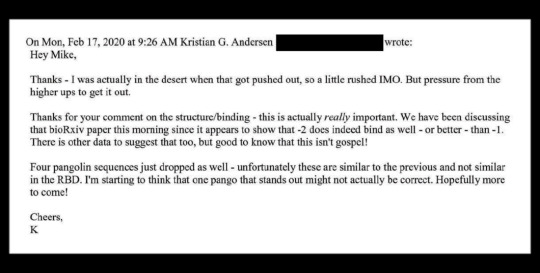
Later, in an interview with a Congressional committee, when asked who these “higher-ups” were, Garry said, “I don't want to speculate on who their higher-ups were. But, I mean, I was aware that there were people that were discussing the potential origins and, you know, a possible lab origin at, you know, different government agencies.”
One possibility was the top ally to Fauci and Collins in Britain, Jeremy Farrar of Wellcome Trust. On February 16, the day Nature Medicine published “Proximal Origins,” Farrar emailed one of Andersen’s coauthors, Andrew Holmes, asking him to make the paper public.
Farrar had already shared the paper with Collins, who had also emailed Holmes to push for immediate publication. A few hours later, Holmes wrote that he had submitted the paper after “pressure from on high.” Said Holmes, “Jeremy Farrar and Francis Collins are very happy.”
In a recently released interview with the House Select Subcommittee on the Coronavirus Pandemic, Andersen called Farrar the paper’s “father figure” but repeatedly denied that Fauci and Collins guided the paper and would not identify them as “higher ups”
“I wouldn't speculate on that,” Andersen said during the interview.
But then Andersen added that there were, indeed, “higher-ups,” and that they were “in the intelligence community both here and in the United Kingdom.” It is such a remarkable passage that it is worth quoting at length.
“I mean,” said Andersen to the House Subcommittee, “it was clear that the White House Office of Science Technology Policy at that February 3rd conference call, Dr. Fauci, in my initial email to me, talked about contacting the intelligence community both here and in the United Kingdom. So that's what my assumption is, that when we're talking the higher-ups here, the White House was aware of this.”
While we still don’t know if those referred to as “on high” or “higher ups” are Fauci, Collins, Farrar, the White House, or the intelligence agencies, it’s clear that the authors were not operating independently. The paper they ultimately wrote was not just the product of a scientific inquiry but also of outside influence. What the nature of that influence is, we still do not know.
It is up to Congress to find out. For months, Fauci, Andersen, and their allies have been pushing the message that ”we may never know” what caused the Covid-19 pandemic. In truth, we are getting closer to understanding what happened with every new batch of emails and Slack messages.
Previously released messages show that a top Fauci advisor who boasted of evading FOIA with his Gmail, and hiding Fauci’s role.
“Tony [Fauci] doesn’t want his fingerprints on origin stories,” wrote Fauci advisor David M. Morens. “As you know, I try to always communicate on gmail because my NIH email is FOIA’d constantly… Don’t worry...I will delete anything I don’t want to see in the New York Times.”
The evidence now shows a clear pattern of Fauci’s top advisors behaving the way that people might if they were engaged in a cover-up. Fauci and Collins pressured Andersen and his colleagues to publish an article dismissing the lab leak even though they believed in it. Morens and Andersen both attempted to evade future FOIA and Subpoena requests using Gmail and Slack.
If it was really the case, as Garry and Andersen said, that Covid-19 did not leak from a lab and that the behaviors revealed by the emails and Slack messages are not a conspiracy theory, then what do they have to hide? Where is the Zoom recording of the February 3 meeting? What was said?
As a nation, we need to go from “we may never know” to “we must find out.” If the behavior by Fauci, Collins, Andersen, Garry, and the others was entirely above board, then they should have no objection to helping members of Congress, journalists, and the public understand what exactly happened between February 3 and February 6 for them to abandon “project-wuhan_engineering” for “project-wuhan_pangolin.”
1 note
·
View note
Text
covid test
Crucial Steps: A Guide to Understanding the COVID Test Process

In the ongoing battle against the global COVID-19 pandemic, testing remains a pivotal tool in identifying and mitigating the spread of the virus. Understanding the COVID test process is crucial for individuals seeking clarity on their health status and for society at large in controlling the transmission of the virus.
The COVID test, short for coronavirus test, is a diagnostic examination designed to detect the presence of the SARS-CoV-2 virus, responsible for causing COVID-19. This testing process typically involves the collection of respiratory samples, such as nasopharyngeal swabs, throat swabs, or saliva samples. The collected specimens are then analyzed in specialized laboratories to determine whether the virus is present.
One of the most common types of COVID tests is the PCR (polymerase chain reaction) test. This method amplifies genetic material from the virus, allowing for its detection with high sensitivity. PCR tests are known for their accuracy and reliability, making them a preferred choice in diagnosing active COVID-19 infections. The process involves inserting a swab into the back of the throat or the nose to collect a sample for analysis.
Another widely used testing method is the rapid antigen test. This test detects specific proteins on the surface of the virus and provides results in a relatively short timeframe. While rapid antigen tests offer quicker results, they may be less sensitive than PCR tests, particularly in individuals with low viral loads.
Understanding the COVID test process extends beyond sample collection. Timely and accurate result reporting is essential for effective public health measures. Individuals undergoing testing should be aware of the typical turnaround time for results, which can vary depending on the type of test and the testing facility. It is crucial to follow testing guidelines and any recommended quarantine measures while awaiting results.
Testing plays a crucial role not only in diagnosing active infections but also in identifying individuals who may be carrying the virus without exhibiting symptoms. Asymptomatic carriers can unknowingly contribute to the spread of COVID-19, making widespread testing a key strategy in controlling outbreaks.
In addition to diagnostic testing, there are also serological tests that detect antibodies produced in response to a previous infection. These tests can provide insights into past exposure to the virus but are not suitable for diagnosing active infections. Serological tests can be valuable in understanding the prevalence of the virus within a community and assessing the potential for herd immunity.
In conclusion, comprehending the COVID test process is vital for individuals, communities, and public health systems. Regular and widespread testing contributes to the timely identification of cases, effective contact tracing, and the implementation of appropriate public health measures. By staying informed about the different types of tests available, their purposes, and the importance of result reporting, individuals can actively participate in the collective effort to curb the spread of COVID-19 and protect the well-being of society as a whole.
Navigating Health Safely: Everything You Need to Know About COVID Tests
In the ongoing battle against the global COVID-19 pandemic, COVID tests have become an integral tool in understanding and managing the spread of the virus. As individuals and communities strive to navigate health safely, it is essential to be well-informed about the various aspects of COVID testing.
A COVID test, or coronavirus test, is a diagnostic procedure aimed at identifying the presence of the SARS-CoV-2 virus, responsible for causing COVID-19. The significance of these tests lies in their ability to detect infections, whether symptomatic or asymptomatic, and to facilitate timely public health interventions.
There are several types of COVID tests, each serving specific purposes. The Polymerase Chain Reaction (PCR) test is a widely used method that detects the genetic material of the virus. Known for its high accuracy, the PCR test is effective in diagnosing active infections and is often employed in healthcare settings and testing laboratories. Nasopharyngeal swabs or throat swabs are commonly used to collect samples for PCR testing.
Rapid antigen tests are another category of COVID tests designed to provide quick results. These tests detect specific viral proteins and are valuable for immediate screening, especially in high-traffic settings. While rapid antigen tests offer prompt results, they may have lower sensitivity compared to PCR tests, particularly in individuals with lower viral loads.
Understanding the COVID test process is crucial for individuals seeking testing. Sample collection methods vary, and individuals may undergo nasal swabs, throat swabs, or even provide saliva samples, depending on the type of test and testing facility. It is important to follow testing guidelines and any recommended quarantine measures while awaiting results.
Testing is not limited to diagnosing active infections. Serological tests, also known as antibody tests, are conducted to detect antibodies produced in response to a past infection. These tests contribute to understanding the prevalence of the virus within a community and assessing potential immunity.
Timely result reporting is a key component of the testing process. Individuals should be aware of the typical turnaround time for results, which can vary based on the type of test and testing facility. Adhering to recommended quarantine measures during the waiting period is essential for preventing further transmission.
Regular and widespread testing is a cornerstone of public health strategies to control the spread of COVID-19. Testing facilitates early identification of cases, effective contact tracing, and the implementation of targeted interventions. By staying informed about the different types of tests available, their purposes, and the importance of result reporting, individuals can actively contribute to the collective effort to navigate health safely and curb the spread of COVID-19 in their communities.
What test should I get to see if I have COVID 19
Navigating Uncertainty: What Test Should I Get to Determine COVID-19 Status?
In the current landscape of the ongoing COVID-19 pandemic, individuals find themselves facing uncertainties regarding the most suitable test to determine their COVID-19 status. The question echoes in the minds of many: What test should I get to see if I have COVID-19? Navigating through the array of testing options requires a comprehensive understanding of the available tests and their distinct characteristics.
One of the primary tests employed to diagnose active COVID-19 infections is the Polymerase Chain Reaction (PCR) test. This molecular diagnostic test detects the genetic material of the SARS-CoV-2 virus and is renowned for its high accuracy. If you are seeking confirmation of a current infection, the PCR test is a reliable choice. It typically involves the collection of nasopharyngeal or throat swab samples, and the results are obtained through laboratory analysis.
For those who prioritize swift results, the rapid antigen test offers a quicker turnaround time compared to the PCR test. Rapid antigen tests detect specific proteins on the surface of the virus and are suitable for immediate screening. However, it is essential to note that these tests may have lower sensitivity, particularly in individuals with lower viral loads. If time is of the essence and you need quick results, the rapid antigen test may be a suitable option.
Navigating uncertainty also involves considering serological tests, commonly known as antibody tests. These tests do not diagnose active infections but rather detect the presence of antibodies produced in response to a past infection. If you are curious about whether you have been previously exposed to the virus and developed an immune response, an antibody test may provide valuable insights.
Choosing the right test depends on various factors, including the presence of symptoms, the urgency of results, and the purpose of testing. If you are experiencing symptoms associated with COVID-19, such as fever, cough, or shortness of breath, a PCR test is recommended for accurate diagnosis. On the other hand, if you require rapid results for immediate decision-making, a rapid antigen test may be more suitable.
It is crucial to adhere to testing guidelines and follow any recommendations from healthcare professionals or testing facilities. Timely result reporting is vital not only for personal decision-making but also for contributing to public health efforts in controlling the spread of the virus. Individuals should be aware of the typical turnaround time for results based on the chosen test.
In conclusion, navigating uncertainty about COVID-19 status involves making informed decisions about the type of test to undergo. Whether opting for the precision of a PCR test, the speed of a rapid antigen test, or the insights from an antibody test, individuals play a crucial role in the collective effort to curb the spread of the virus. By understanding the nuances of each test and considering individual circumstances, individuals can make informed choices to safeguard their health and contribute to the broader public health goals.
Choosing Wisely: A Guide to Selecting the Right Test for COVID-19 Detection
In the ongoing battle against the global COVID-19 pandemic, the importance of selecting the right test for accurate detection cannot be overstated. Individuals are often confronted with the question: What test should I get to see if I have COVID-19? Navigating through the myriad of testing options requires careful consideration and an understanding of the distinct features of each test.
One of the primary tests recommended for COVID-19 detection is the Polymerase Chain Reaction (PCR) test. Renowned for its high accuracy, the PCR test detects the genetic material of the SARS-CoV-2 virus, providing a reliable diagnosis of active infections. Typically, nasopharyngeal or throat swab samples are collected, and the results are obtained through thorough laboratory analysis. If precision in diagnosis is a priority, the PCR test is a prudent choice.
For those seeking rapid results, the rapid antigen test emerges as an alternative. This test detects specific viral proteins and offers quicker turnaround times compared to the PCR test. However, it is essential to note that the rapid antigen test may have lower sensitivity, particularly in individuals with lower viral loads. If immediate results are crucial for decision-making, the rapid antigen test may be a suitable option.
Adding another dimension to the testing landscape are serological tests, commonly known as antibody tests. Unlike diagnostic tests, antibody tests do not identify active infections but instead detect the presence of antibodies developed in response to a past infection. If the goal is to understand past exposure and potential immunity, an antibody test may provide valuable insights.
Choosing the right test depends on various factors, including symptoms, the urgency of results, and the purpose of testing. If an individual is symptomatic with signs of COVID-19, such as fever, cough, or shortness of breath, opting for a PCR test is advisable to ensure accurate diagnosis. Conversely, if rapid results are needed for immediate decision-making, the rapid antigen test may be more suitable.
Adhering to testing guidelines and following recommendations from healthcare professionals or testing facilities is crucial. Additionally, being aware of the typical turnaround time for results based on the chosen test is essential for planning and taking appropriate actions while awaiting results.
In conclusion, the process of choosing the right test for COVID-19 detection involves a thoughtful evaluation of individual circumstances and testing priorities. Whether prioritizing accuracy with a PCR test, speed with a rapid antigen test, or insights into past exposure with an antibody test, individuals play a crucial role in the collective effort to curb the spread of the virus. By making informed decisions about testing options, individuals contribute not only to their personal well-being but also to the broader public health goals aimed at controlling and mitigating the impact of the COVID-19 pandemic.
Hello american
hello american - Your Magazine: Famous News, Lifestyle, Health, Technology, Career & fun etc
News:
"Welcome to Hello American's News Hub, where stories unfold and perspectives converge. Stay informed with our diverse coverage of national and global events, providing in-depth analyses, breaking news, and thought-provoking insights that shape our world."
Health:
"Hello American Health: Your Wellness Compass. Discover a wealth of health resources, expert advice, and articles dedicated to promoting holistic well-being. From fitness trends to mental health guides, we're committed to empowering you on your journey to a healthier life."
Lifestyle:
"Experience the Vibrant hello american Lifestyle. Delve into our curated collection celebrating the rich tapestry of American living. Explore travel destinations, culinary delights, fashion trends, and more, embracing the diverse threads that weave the fabric of our culture."
Technology:
"Hello American Tech: Navigating Tomorrow's Innovations. Explore the forefront of technology with us. From gadget reviews to AI breakthroughs, our tech section unveils the latest trends, helping you stay connected and empowered in an ever-evolving digital landscape."
Career:
"Hello American Careers: Empowering Your Professional Odyssey. Embark on a journey of growth and opportunities. Access career insights, job openings, mentorship programs, and skill development resources, designed to fuel your aspirations and drive your career forward."
Education:
"Education Redefined at Hello American. Embrace learning as an ongoing adventure. Dive into our educational hub, where traditional knowledge meets innovative approaches. Explore diverse learning paths, online courses, and resources designed to inspire lifelong curiosity and growth."
Each section offers a tailored experience, catering to the diverse interests and needs of the Hello American audience, while aiming to provide valuable information and resources in these respective domains.
0 notes
Text
Delta or different variant may cause another Covid outbreak: Study

The Omicron subvariants may burn themselves out in the next couple of months and there could be another outbreak of Delta or a different coronavirus strain this summer, according to a modelling study conducted in Israel.
The findings, published last week in the journal Science of the Total Environment, suggests that while Delta wiped out the variants that preceded it, Omicron has not eliminated the deadly variant which could re-emerge.
omicron variants
Researchers from Ben-Gurion University of the Negev (BGU) in Israel developed sensitive arrays that can differentiate variants from each other in wastewater which continues to give indications of where the coronavirus is active, even when PCR and rapid testing of people declines. Read More
#omicron variants#covid outbreak#coronavirus strain#delta variant#latest news on coronavirus pandemic#COVID-19 pandemic#Covid pandemic#Coronavirus news
0 notes
Text

#covid vaccine#tw covid#covid news#fuck covid#pandemic#covid19#covid cases#coronavirus#vaccine#covid pandemic#covid#long covid#work from home#make money fast#online business#how to make money online#make money from home#how to earn money#communism#anarchism#antifascism#socialist#revolution#anarchocommunism
1K notes
·
View notes
Text








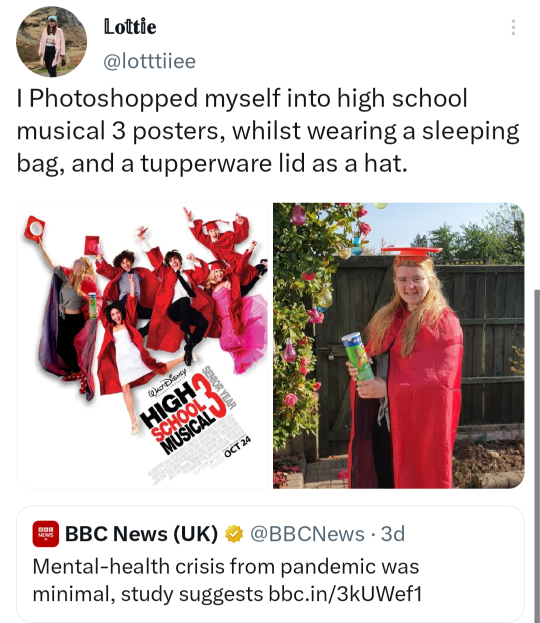

#bbc news uk#bbc news#covid 19#coronavirus#mental health#apparently they just didn't interview any poor or vulnerable people or any service workers????#they just interviewed celebrities in their mansions I guess#'yeah it was fine I just stayed in my 18-bedroom house and swam in my olypmic-sized pool every day'
1K notes
·
View notes
Text
अब महाराष्ट्र सरकार में मंत्री छगन भुजबल हुए कोरोना पॉजिटिव, जानें हाल में कौन से नेता हुए संक्रमित
अब महाराष्ट्र सरकार में मंत्री छगन भुजबल हुए कोरोना पॉजिटिव, जानें हाल में कौन से नेता हुए संक्रमित
Image Source : PTI
Chhagan Bhujbal Corona Positive
Highlights
छग्गन भुजबल ने दी संक्रमित होने की जानकारी
इससे पहले अजित पवार हुए कोरोना पॉजिटिव
महाराष्ट्र में 24 घंटे में कोरोना से 5 लोगों की मौत
Chhagan Bhujbal Corona Positive: महाराष्ट्र में कोरोना वायरस के मामले बढ़ते जा रहे हैं। इस बीच, अब राज्य के नेता भी कोरोना की चपेट में आ रहे हैं। महाराष्ट्र के राज्यपाल भगत सिंह कोश्यारी, महाराष्ट्र…

View On WordPress
#Ajit Pawar#Bhagat Singh Koshyari#Chhagan Bhujbal#Chhagan Bhujbal Corona Positive#Corona cases#Coronavirus News#covid positive#covid-19 cases#Maharashtra corona cases#Maharashtra Hindi News#NCP leader Chhagan Bhujbal#Uddhav Thackeray#कोरोना पॉजिटिव#कोरोना वायरस
0 notes
